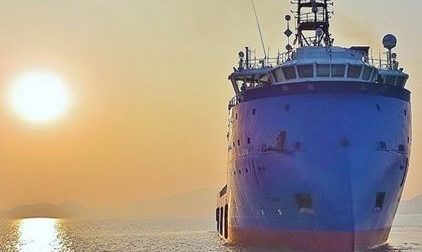Battered OSV sector braces for another challenging year

The offshore outlook for 2020 is muted at best, with senior executives interviewed by Splash worried that unless dramatic consolidation takes place the sector will suffer its sixth consecutive year of downturn.
While many had hoped that 2019 would mark a turning point in OSV fortunes this did not materialise and now there is concern that the worst downturn since the 1980s is set to drag on.
Last year brought much needed improvements in the fundamentals of the OSV chartering market, albeit at a slower pace than most were expecting and with marked differences between geographies and asset classes.
“On the capital side, there have also been positive signs regarding the critically required deleveraging of OSV owners. Certain lenders have been showing a willingness to restructure and sell debt at realistic discounts, and new capital providers have been showing a willingness to buy at these terms,” Joshua Politis, head of offshore at Transport Capital, tells Splash.
“Should these two trends gain momentum in 2020, we can see some meaningful consolidation of owners take place, which in turn would facilitate an increase in scrapping and a return of greater market discipline,” Politis argues.
Gautam Chellaram, CEO of OSV firm Chellsea, said he expected another “challenging year” with rates similar to 2019.
“The macro picture is forecasting oil price to hover in the mid to high 60s region which will not make it feasible for oil companies to further increase offshore E&P investment; this combined with an overhang on supply of OSV’s will keep the day rates at its existing equilibrium,” Chelleram predicted. However, the silver lining to all this, according to the Chellsea boss, is that asset prices are cheap and the OSV market is continuously consolidating thus reducing the competition.
“Fortune will favour the brave who see this as the opportunity,” Chelleram said.
Andre Wheeler, a Splash columnist, said he was seeing the beginnings of a slow recovery in the OSV markets.
It is debatable whether this recovery will be sustainable as the lead indicator, namely rig deployments, is not showing a lot of movement, particularly as onshore shale gas exploration continues to gather momentum,” Wheeler said.
Wheeler said he could see the North Sea providing some hope for 2020 as decommissioning of older production platforms gains momentum. This would drive the need for jackups , leading to greater need for OSVs, particularly AHTSs and PSVs that have a minimum of DP3 capability.
Mike Meade, CEO of Singapore brokerage M3 Marine, said he was worried about all the tonnage on the water and the overhang of newbuildings in China still to work through.
“A lack of liquidity in the lending space has also led to a major disruption in companies with too much leverage on their balance sheet with an inability to restructure,” Meade said.
Among the few bright spots on the horizon, Meade said the subsea market is showing some signs of life.
“The Malaysian market is quite active and is sucking up a lot of the overcapacity in the region,” Meade said.
Shel Hutton, CEO of Ultra Deep Solutions, pointed out that the high end DSCV market is moving as demand picks up.
“The key right now is hold assets 10 years or newer,” Hutton suggested.
Venkatraman Sheshashayee, an OSV veteran and Splash columnist, was luke warm about prospects when contacted today.
“There is unlikely to be much investment into offshore exploration and development this year. The industry is likely to continue its waiting game,” Sheshashayee predicted, saying he did not foresee much change for OSV fortunes from 2019.
“Utilisation has already crept up; charter rates are holding firm, a little above the bottoming out in 2018; some vessels will be scrapped as owners realise the futility of holding on. OSV companies will continue to walk the thin line between health and insolvency; some are going to tip over,” Sheshashayee concluded.
